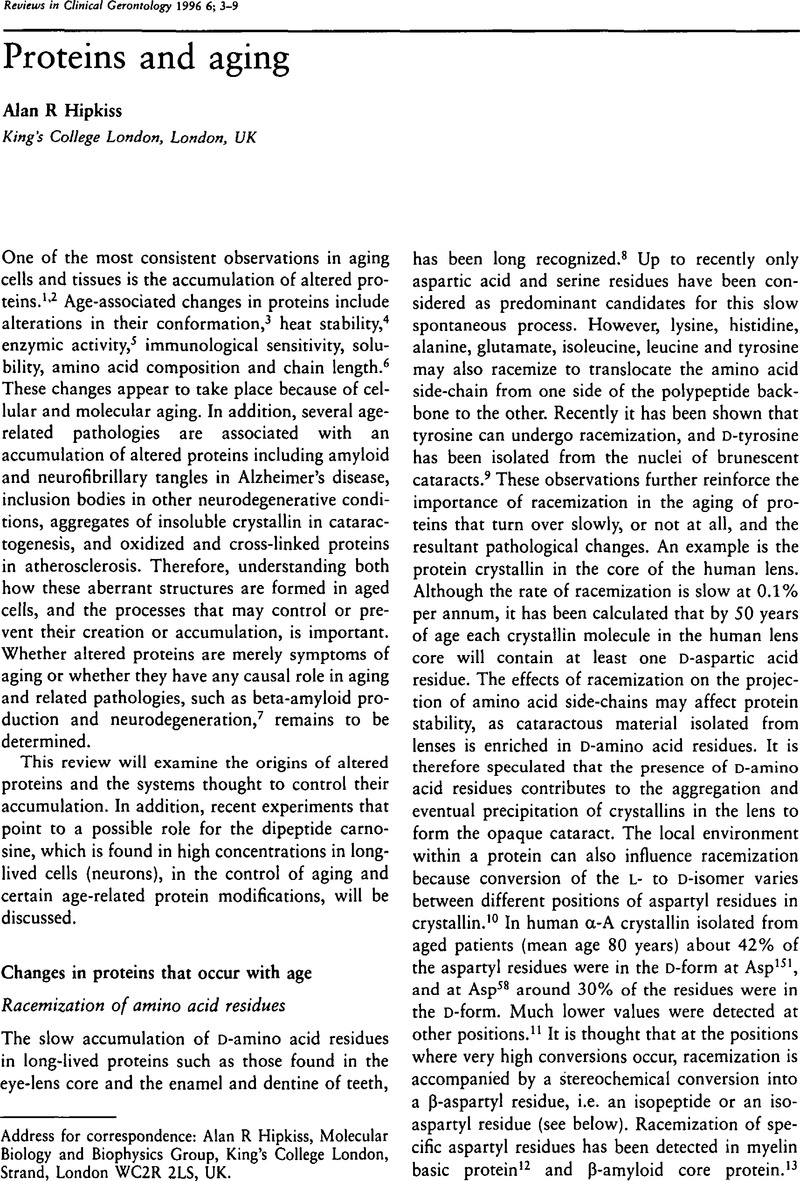Crossref Citations
This article has been cited by the following publications. This list is generated based on data provided by Crossref.
HIPKISS, A. R.
PRESTON, J. E.
HIMSWORTH, D.T. M.
WORTHINGTON, V. C.
KEOWN, M.
MICHAELIS, J.
LAWRENCE, J.
MATEEN, A.
ALLENDE, L.
EAGLES, P.A. M.
and
ABBOTT, N. JOAN
1998.
Pluripotent Protective Effects of Carnosine, a Naturally Occurring Dipeptidea.
Annals of the New York Academy of Sciences,
Vol. 854,
Issue. 1,
p.
37.
Hipkiss, Alan R.
Worthington, Viki C.
Himsworth, David T.J.
and
Herwig, Wolker
1998.
Protective effects of carnosine against protein modification mediated by malondialdehyde and hypochlorite.
Biochimica et Biophysica Acta (BBA) - General Subjects,
Vol. 1380,
Issue. 1,
p.
46.



